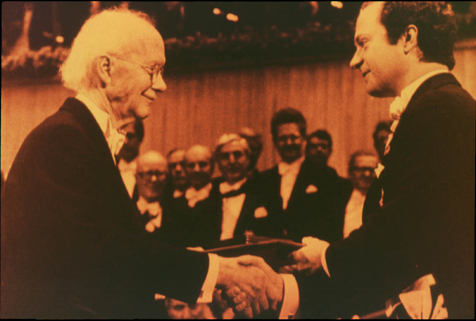
Faculty Research 1980 - 1989
Hemoglobin switching in sheep: a comparison of the erythropoietin-induced switch to HbC and the fetal to adult hemoglobin switch.
Document Type
Article
Publication Date
1980
Keywords
Cell-Differentiation Cells-Cultured, Erythropoietin, Fetal-Hemoglobin, Hematopoietic-Stem-Cells, Hemoglobin-A, Hemoglobin-C: bi, Pregnancy, Sheep: me, Time-Factors
First Page
488
Last Page
494
JAX Source
Blood. 1980 Sep; 56(3):488-94.
Abstract
Stimulation of sheep erythropoietic progenitor cells by erythropoietin (epo) has been studied with regard to its effect on the pattern of hemoglobin production. An analysis of hemoglobin (Hb) synthesis in BFU-E- and CFU-E-derived colonies from fetuses either homozygous for HbA (AA) (homozygous also for the beta c gene responsible for HbC production) or HbB (BB) (lacking the beta c gene) indicated the following. Colonies derived from precursor cells from 51- and 89-day fetuses exhibited small but detectable increments of HbB synthesis with prolonged incubation in vitro. This response was not dependent on the epo concentration. Erythropoietic precursor cells from a 124-day BB fetus were already committed to HbB synthesis, since HbF production was replaced by HbB on successive days in vitro as erythroid colonies matured; this switch was not affected by varying the epo concentration. In contrast, progenitor cells from a 124-day AA fetus responded to higher doses of epo by forming colonies in which more HbC was made at the expense of both HbF and HbA. Erythropoietic stress did not result in induction of HbF in vivo or in erythroid colonies derived from CFU-E in young adult BB sheep, whereas our prior studies had shown induction of HbC synthesis under analogous conditions in colonies derived from young adult AA sheep. We conclude that the epo-induced HbF (or HbA) to HbC switch and the fetal to adult hemoglobin switch are regulated by different mechanisms.
Recommended Citation
Barker JE,
Pierce JE,
Nienhuis AW.
Hemoglobin switching in sheep: a comparison of the erythropoietin-induced switch to HbC and the fetal to adult hemoglobin switch. Blood. 1980 Sep; 56(3):488-94.

